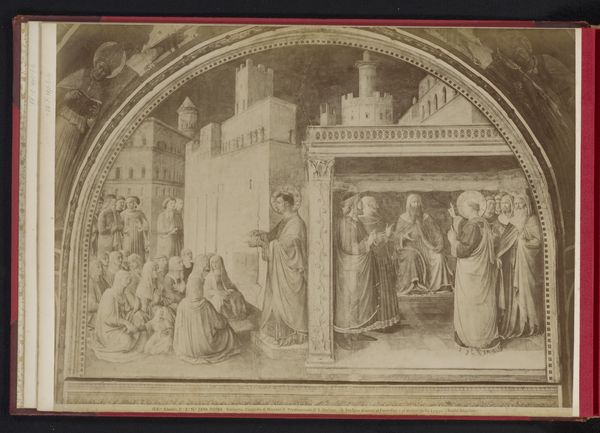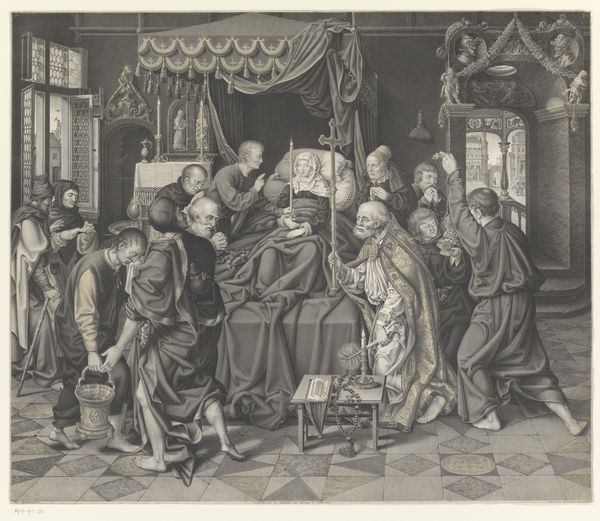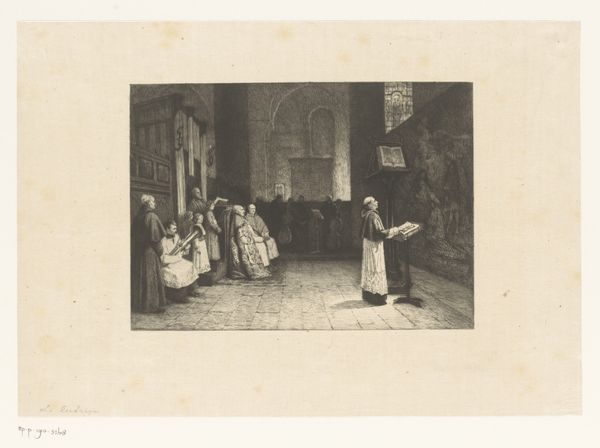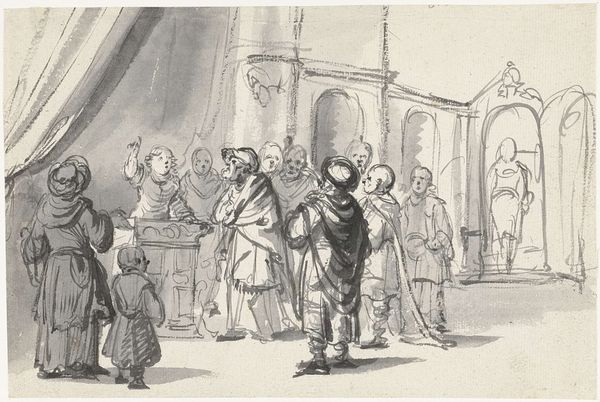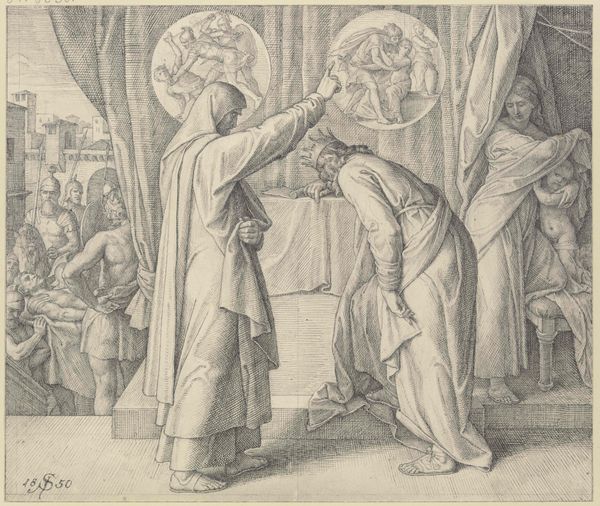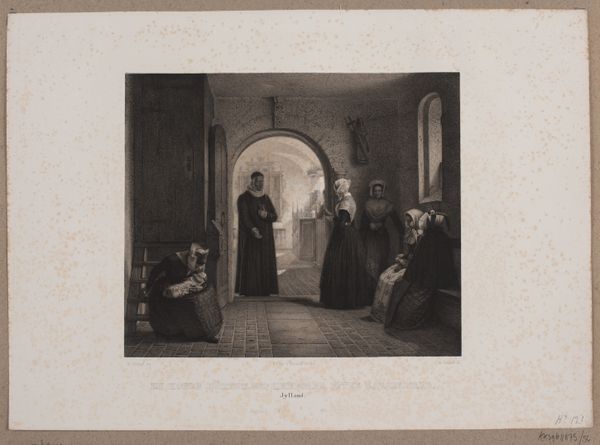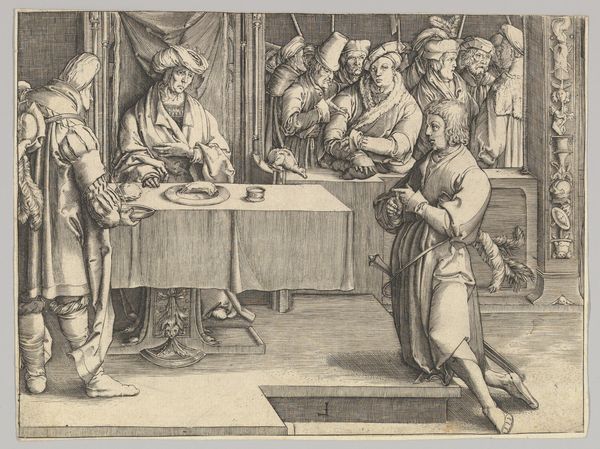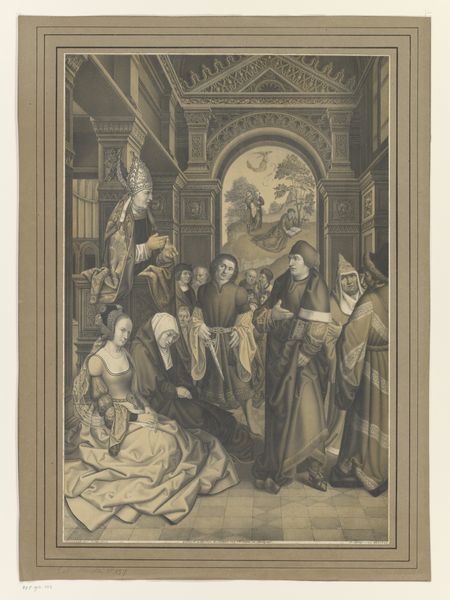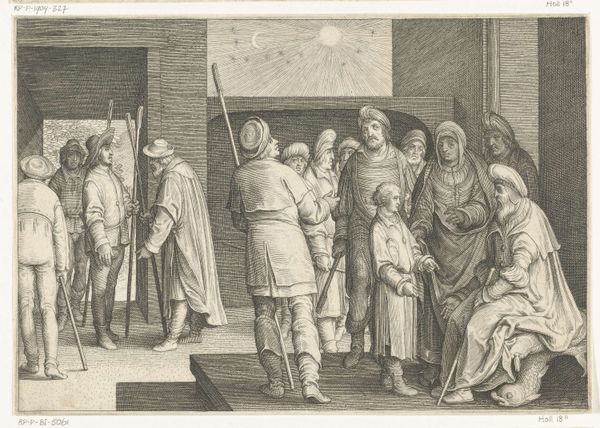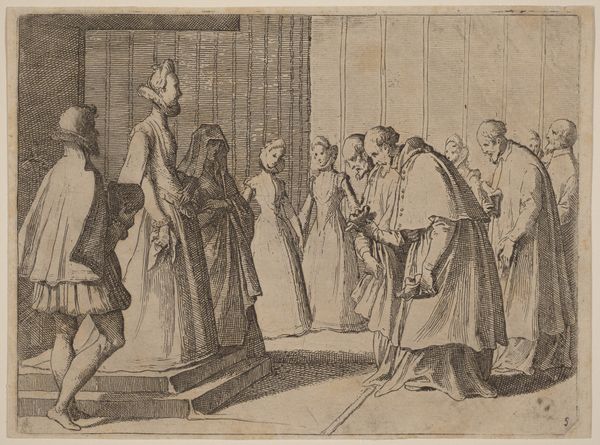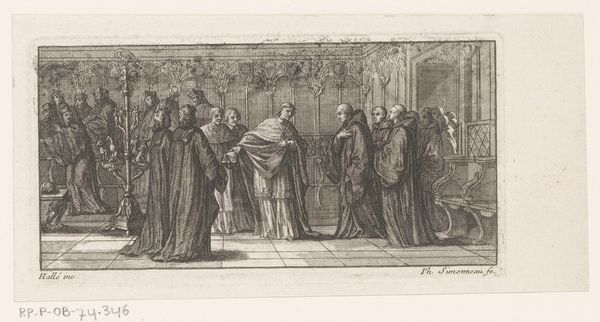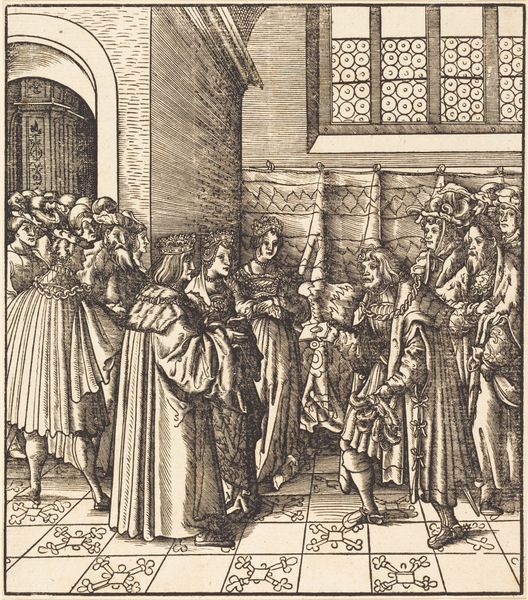
Ambassador Cornelis Calkoen at his Audience with Sultan Ahmed III c. 1727 - 1730
0:00
0:00
painting, oil-paint, architecture
#
portrait
#
narrative-art
#
baroque
#
painting
#
oil-paint
#
painting painterly
#
islamic-art
#
genre-painting
#
history-painting
#
watercolor
#
architecture
Dimensions: height 90 cm, width 121 cm, weight 10.8 kg
Copyright: Rijks Museum: Open Domain
Curator: Before us hangs "Ambassador Cornelis Calkoen at his Audience with Sultan Ahmed III," an oil painting dating roughly from 1727 to 1730, by Jean Baptiste Vanmour. Editor: The scene strikes me immediately with its stillness and muted formality. The repeating figures and conical hats feel almost like an architectural detail against the backdrop of the palace interior. Curator: Precisely. Vanmour, deeply embedded in the Ottoman court, captured a pivotal moment of cultural exchange. The artwork portrays the Dutch Ambassador Calkoen during his audience with Sultan Ahmed III. It represents a deliberate performance of power, a staged encounter for diplomatic purposes. I think about the performance of power as gender and race. Editor: Thinking of power, how do you interpret the carefully orchestrated setting – the patterned walls, the raised dais for the Sultan? All components contributing to the message of Ottoman authority. This painting also was comissioned to celebrate new ties. What can you tell us about the broader social narrative at play? Curator: Contextually, it reveals the dynamic interplay between the Ottoman Empire and Europe during the 18th century. The elaborate staging highlights the significance of diplomacy and intercultural negotiations, also showing cultural hierarchies in these processes. Moreover, such images also served domestic consumption. Editor: Yes. This carefully rendered painting style reminds us that Vanmour was intentionally constructing an image, designed not merely to record but to actively shape perceptions, both within the Ottoman Empire and back in Europe. How did this artist understand or frame cultural representation in the picture, considering this historical period? Curator: He became central to this understanding, positioning the East as both fascinating and knowable to a European gaze. There is Orientalist discourse at play. But Vanmour was far more engaged with his sitters, capturing individual personalities through dress, gaze, gesture. I am very aware of their gaze, the message this sends, the stories they are hoping to build within that space. Editor: Ultimately, a potent visual record of cultural exchange, performance, and political positioning at a fascinating juncture in history. I will spend a moment longer observing that brilliant orange on the carpet, knowing a painter constructed a representation that would shape how his own society saw and understood diplomacy and cultural power. Curator: Exactly. We also observe its place in Ottoman-European power dynamics as expressed and internalized in portraiture of the era. Thank you for giving me things to consider here.
Comments
rijksmuseum about 2 years ago
⋮
The actual audience was held in the sultan’s private living quarters in the palace. After the meal with the grand vizier, Calkoen and his retinue were presented with kaftans as a sign of hospitality, but also to cover the clothing of the ‘non-believers’. Ahmed sits on a throne, with four princes next to him. Calkoen is giving a speech and will afterwards present his credentials to the sultan.
Join the conversation
Join millions of artists and users on Artera today and experience the ultimate creative platform.
